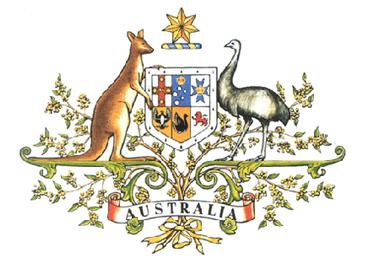
The Red Kangaroo and Emu that support the shield are the official animal emblems of the nation. They owe this recognition to the fact that they are native Australian fauna (found only on this continent).
...and then we go and massacre them.
The 2008 Belconnen Massacre - lest we forget
We are reminded of the brutal belconnen massacre of 500 kangaroos yesterday two years ago on 19th May 2008, followed shortly afterwards with another 4000 or so kangaroos massacred at the Majura Army training area. "Kevin Rudd or Environment Minister Peter Garrett declined to stop the killings. It was supported by the RSPCA's Micheal Linke." ['Two years since the shameful Belconnen slaughter in Canberra']
Then around this time last year Australia's Defence Minister, Joel Fitzgibbon MP, approved a similar kangaroo massacre at the same place on Saturday, 9th May 2009. [Fitzgibbon's Massacre - 9th May 2009]
These wildlife massacres reflect a prevaling backward colonial attitude by our government towards native animals. Native animals were regarded as vermin by early colonists. This attitude prevails.
Labor's Big Ecological Lie
At the time, outright propaganda lies were told by government officials and politicians that the kangaroos were starving and the kangaroos threatening native grassland and three threatened species on the site, the striped legless lizards, golden sun moths and Ginninderra peppercress. Read More
Such propaganda is right out of Joseph Goebbles "Big Lie" technique based on the principle that a lie, if audacious enough and repeated enough times, will be believed by the masses. Goebbles' propaganda attacks on the Jewish population culminated in the Kristallnacht assault of 1938, an open and unrestrained pogrom unleashed by the Nazis all across Germany, in which scores of synagogues were burned and hundreds of Jews were assaulted and murdered. [Source]
The truth at Belconnen is that the government wanted new housing estates to go up where the kangaroos lived, so they slaughtered the kangaroos. Simple and brutal as that.
The Truth about the 2008 Belconnen Massacre
Colonist Australia - a history of slaughtering native Australians
The truth across all of Australia through its colonial history right up to recent times, is the government wanted the land where Aborigines lived, so they slaughtered the Aborigines. Simple and brutal as that. Today's 21st century official slaughter of Australian native animals is no different to the official slaughter of Australian native people by European colonists, who treated Aboriginal people as vermin.
The following massacres are shocking testament. Such truths of Australian history remains excluded from the Australian school curriculum. Such truths of Australian ecological present remain excluded from the Australian school curriculum.
[List_of_massacres_of_Indigenous_Australians]
1790 Botany Bay Genocide In December, Governor Arthur Phillip issued an order for "a party...of two captains, two subalterns and forty privates, with a proper number of non-commissioned officers from the garrison...to bring in six of those natives who reside near the head of Botany Bay; or, if that number shall be found impracticable, to put that number to death".
1824 Bathurst Massacre Following the killing of seven Europeans by Aboriginal people around Bathurst, New South Wales, martial law was declared and many Aboriginal people were killed.
1828 Cape Grim Massacre On 10th February in the North west of Van Diemen's Land, now known as Tasmania, four shepherds with musket guns ambushed over 30 Tasmanian Aborigines from the Pennemukeer band from Cape Grim, killing 30 and throwing their bodies over a 60 metre cliff into the sea.
1830 Fremantle Punishment Raid The first official 'punishment raid' on Aboriginal people in Western Australia, led by Captain Irwin took place in May 1830. A detachment of soldiers led by Irwin attacked an Aboriginal encampment north of Fremantle in the belief that it contained men who had 'broken into and plundered the house of a man called Paton' and killed some poultry. Paton had called together a number of settlers who, armed with muskets, set after the Aborigines and came upon them not far from the home. 'The tall savage who appeared the Chief showed unequivocal gestures of defiance and contempt' and was accordingly shot. Irwin stated, "This daring and hostile conduct of the natives induced me to seize the opportunity to make them sensible to our superiority, by showing how severely we could retaliate their aggression." In actions that followed over the next few days, more Aborigines were killed and wounded.
1833-34 Convincing Ground Massacre of Gunditjmara On the shore near Portland, Victoria was one of the largest recorded massacres in Victoria. Whalers and the local Kilcarer Gunditjmara people disputed rights to a beached whale carcass.
1834: Battle of Pinjarra In Pinjarra Western Australia, official records state 14 Aboriginal people were killed, but other accounts put the figure much higher.
1838 Myall Creek Massacre 10 June: 28 people killed at Myall Creek near Inverell, New South Wales. This was the first Aboriginal massacre for which European settlers were successfully convicted. Several colonists had previously been found not guilty by juries despite the weight of evidence and one colonist found guilty had been pardoned when his case was referred to Britain for sentencing. Eleven men were charged with murder but were initially acquitted by a jury. On the orders of the Governor, a new trial was held using the same evidence and seven of the eleven men were found guilty of the murder of one Aboriginal child and hanged. The successful prosecutions resulted in pacts of silence becoming a common practice to avoid sufficient evidence becoming available for future prosecutions. Many large scale massacres were to go unpunished due to this practice.
1838 Waterloo Creek Massacre A Sydney mounted police detachment attacked an encampment of Kamilaroi people at a place called Waterloo Creek in remote bushland.
1838 Faithfull Massacre Benalla -In April of that year a party of some 18 men, in the employ of George Faithful and William Faithfull, were searching out new land to the south of Wangaratta. Then, in the vicinity of, or possibly on, the present townsite of Benalla, it is alleged that a large number of Aborigines attacked the party's camp. At least one Koori and somewhere between eight and thirteen Europeans died in what became known as the Faithfull Massacre. Local reprisals lasted a number of years, resulting in the deaths of up to 100 Aborigines. The reason for the attack is unclear although some sources claim that the men took shots at local Aborigines and generally provoked them.[15] It also seems they were camping on a hunting ground
Additional murders of these people occurred at Warangaratta on the Ovens River, at Murchison (led by the native police under Dana and in the company of the young Edward Curr, who could not bring himself to discuss what he witnessed there other than to say he took issue with the official reports) Other incidents were recorded Mitchelton and Toolamba.
This "hunting ground" would have been a ceremonial ground probably called a 'Kangaroo ground'. Hunting grounds were all over so not something that would instigate an attack. The colonial government decided to "open up" the lands south of Yass after the Faithful Massacre and bring them under British rule. This was as much to try and protect the Aboriginal people from reprisals as to open up new lands for the colonists. The Aboriginal people were (supposedly) protected under British law.
1839 Campaspe Plains Massacre At Campaspe Creek, Central Victoria in May-June saw the genocidal slaughter of the Daung Wurrung and Dja Dja Wurrung people.
Mid 1839 Murdering Gully Massacre Near Camperdown, Victoria saw the genocidal "wiping out" of the Tarnbeere Gundidj clan of the Djargurd Wurrung people.
1830s—1840s Wiradjuri Wars Clashes between European settlers and Wiradjuri were very violent, particularly around the Murrumbidgee. The loss of fishing grounds and significant sites and the killing of Aboriginal people was retaliated through attacks with spears on cattle and stockmen. In the 1850s there were still corroborees around Mudgee but there were fewer clashes. Known ceremony continued at the Murrumbidgee into the 1890s. European settlement had taken hold and the Aboriginal population was in temporary decline.
1865 The La Grange Expedition was a search expedition carried out in the vicinity of La Grange Bay in the Kimberley region of Western Australia led by Maitland Brown that led to the death of up to 20 Aboriginal people. The expedition has been celebrated with the Explorers' Monument in Fremantle, Western Australia.
1868 Flying Foam Massacre - Dampier Archipelago, Western Australia. Following the killing of two police and two settlers by local Yaburara people, two parties of settlers from the Roebourne area, led by prominent pastoralists Alexander McRae and John Withnell, killed an unknown number of Yaburara. Estimates of the number of dead range from 20 to 150.
1874 Barrow Creek Massacre - February (NT): Mounted Constable Samuel Gason arrived at Barrow Creek and a police station was opened. Eight days later a group of Kaytetye men attacked the station, either in retaliation for treatment of Kaytetye women, the closing off of their only water source, or both. Two white men were killed and one wounded. Samuel Gason mounted a large police hunt against the Kaytetye resulting in the killing of many Aboriginal men, women and children - some say up to 90. Skull Creek takes its name from the bleached bones found there long after.
1876 Goulbolba Hill Massacre In Central Queensland thre was a large massacre involving men, women and children. This was the result of settlers pushing Aboriginal people out of their hunting grounds and the Aboriginals being forced to hunt livestock for food. A party of Native Police was sent to "disperse" this group of Aboriginals. This led to the deaths of over 200 Aboriginal people including all the women and children.
1880s-90s Florida Station Massacre In Arnhem Land a series of skirmishes and "wars" between Yolngu and whites occurred. There were several reported massacres at Florida Station. Richard Trudgen also writes of several massacres in this area, including an incident where Yolngu were fed poisoned horsemeat after they killed and ate some cattle (under their law, it was their land and they had an inalienable right to eat animals on their land). Many people died as a result of that incident. Trudgen also talks of a massacre ten years later after some Yolngu took a small amount of barbed wire from a huge roll to build fishing spears. Men, women and children were chased by mounted police and men from the Eastern and African Cold Storage Company and shot.
1884 Battle Mountain Massacre 200 Kalkadoon people killed near Mount Isa, Queensland after a Chinese shepherd had been murdered.
1887 Halls Creek Genocides In the Kimberly, colonist Mary Durack suggests there was a conspiracy of silence about the massacres of Djara, Konejandi and Walmadjari peoples about attacks on Aborigines by white gold-miners, Aboriginal reprisals and consequent massacres at this time. John Durack was speared, which led to a local massacre in the Kimberley.
1890 Speewah Massacre In Queensland early settler, John Atherton, took revenge on the Djabugay by sending in native troopers to avenge the killing of a bullock. Other unconfirmed reports of similar atrocities occurred locally.
1890-1920 'The Killing Times' - East Kimberleys: About half of the Kimberley Aboriginal people massacred as a result of a number of reprisals for cattle spearing, and payback killings of European settlers.
1906-7 Canning Stock Route Massacre : an unrecorded number of Aboriginal men and women were raped and massacred when Mardu people were captured and tortured to serve as 'guides' and reveal the sources of water in the area after being 'run down' by men on horseback, restrained by heavy chains 24 hours a day, and tied to trees at night. In retaliation for this treatment, plus the party's interference with traditional wells, and the theft of cultural artefacts, Aborigines destroyed some of Canning's wells, and stole from and occasionally killed white travellers. A Royal Commission in 1908, exonerated Canning, after an appearance by Kimberley Explorer and Lord Mayor of Perth, Alexander Forrest claimed that all explorers had acted in such a fashion.
1915 Mistake Creek Masacre Seven Kija people were alleged to have been killed by men under the control of a Constable Rhatigan, at Mistake Creek, East Kimberley. The massacre is supposed to be in reprisal for allegedly killing Rhatigan's cow, however the cow is claimed to have been found alive after the massacre had already taken place. Rhatigan was arrested for wilful murder apparently due to the fact that the killers were riding horses which belonged to him, but the charges were dropped, for lack of evidence that he was personally involved.
1918 Bentinck Island Massacre In 1918 part of the Mornington Island group, Bentinck Island was home to the Kaiadilt clan of just over 100 people. In 1911 a man by the name of McKenzie (other names unknown) was given a government lease for nearby Sweers Island that also covered the eastern portion of the much larger Bentinck Island. Arriving on Bentinck with an Aboriginal woman and a flock of sheep, he built a hut near the Kurumbali estuary. Although the Kaiadilt avoided contact and refrained from approaching McKenzie's property he is alleged to have often explored the island, shooting any males he found while raping the women.
In 1918 McKenzie organised a hunt with an unknown number of settlers from the mainland and beginning from the northern tip of the island herded the Indigenous inhabitants to the beach on its southern shore. The majority of the Kaiadilt fled into the sea where those that were not shot from the shore drowned. Those that tried to escape along the beach were hunted down and shot with the exception of a small number who reached nearby mangroves where the settlers horses could not follow. Several young women were raped on the beach, then held prisoner in McKenzie's hut for three days before being released.
1924 Bedford Downs Massacre a group of Kija or Gija men were jailed for spearing a bullock. On release from jail they had to walk the 200 kilometres back to Bedford Downs, where they were set to work to cut the wood that was later used to burn their bodies. Once the work was finished they were fed Strychnine, and the bodies were burned.
1926 Forrest River Massacre In the East Kimberleys in May 1926, Fred Hay, a pastoralist, was speared and killed by an Aboriginal man, Lumbia. A police patrol led by Constables James St Jack and Denis Regan left Wyndham on June 1, to hunt for the killer, and in the first week of July, Lumbia, the accused man, was brought into Wyndham. In the months that followed rumours circulated of a massacre by the police party. The Rev. Ernest Gribble of Forrest River Mission (later Oombulgurri) alleged that 30 people had been killed by the police party. A Royal Commission, conducted by G. T. Wood sent an evidence-gathering party and heard evidence regarding Gribble's allegations. The Royal Commission found that 11 people had been massacred and the bodies burned.
1928 Coniston Massacre - A WW1 veteran shot 32 Aborigines at Coniston in the Northern Territory after a white dingo trapper and station owner were attacked by Aborigines.
Lest we forget.

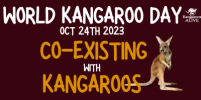 We're excited to launch this years World Kangaroo Day, October 24th 2023. The theme is 'Co-existing with Kangaroos’. We once again are pleased to welcome our ambassador, Australian cricket legend and proud Kamilaroi man, Jason 'Dizzy' Gillespie. Let's get together across the world to start preparing fun and ground breaking activities to celebrate kangaroos. (Kangaroos Alive)
We're excited to launch this years World Kangaroo Day, October 24th 2023. The theme is 'Co-existing with Kangaroos’. We once again are pleased to welcome our ambassador, Australian cricket legend and proud Kamilaroi man, Jason 'Dizzy' Gillespie. Let's get together across the world to start preparing fun and ground breaking activities to celebrate kangaroos. (Kangaroos Alive)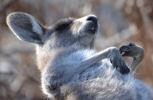 Victorian Kangaroos need your signature on this petition! They have been decimated by bushfires and the Victorian Government estimates of numbers are way out. The Mornington Peninsula contains a landlocked group of grey kangaroos that are menaced by several processes, including increased development, traffic, fencing, shooting, and the so-called Kangaroo Harvest Program (KHP). These animals need our help and protection. The petition calls upon the Victorian Government to suspend its 'harvest' program. See below.
Victorian Kangaroos need your signature on this petition! They have been decimated by bushfires and the Victorian Government estimates of numbers are way out. The Mornington Peninsula contains a landlocked group of grey kangaroos that are menaced by several processes, including increased development, traffic, fencing, shooting, and the so-called Kangaroo Harvest Program (KHP). These animals need our help and protection. The petition calls upon the Victorian Government to suspend its 'harvest' program. See below.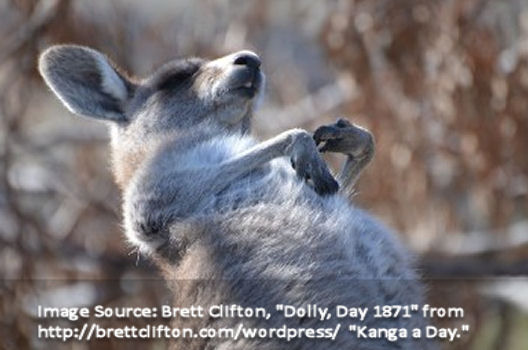
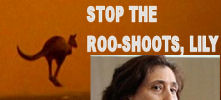 To:
To: 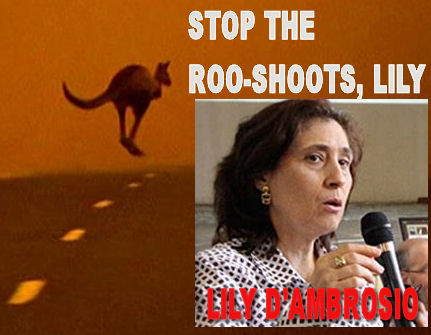
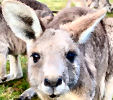 The issues facing kangaroos on the Peninsula, state and countrywide are serious and it is vital we get the word out to the public. We can offer a few ways for concerned citizens to get involved and express their opinions to be a voice for wildlife.
The issues facing kangaroos on the Peninsula, state and countrywide are serious and it is vital we get the word out to the public. We can offer a few ways for concerned citizens to get involved and express their opinions to be a voice for wildlife.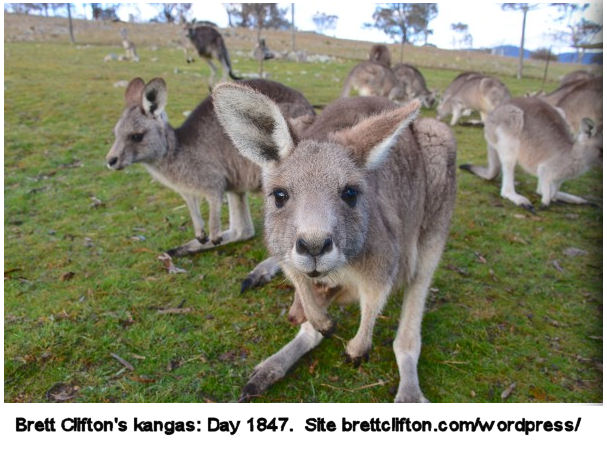
 Greensbush Association is screening the new international film about Kangaroos in Australia at 5.30pm May 25th at Main Ridge Community Hall, Main Creek Road, Main Ridge, (Mornington Peninsular) Victoria. This film has been screened and reviewed widely around the world to stunned reviews and I have not found any negative ones. It is not so well known in Australia, of course, because it challenges what governments and corporate press have to say about kangaroos. The Association screening this film is named after Greensbush Mornington Peninsular National Park, which is one of few places where kangaroos might now dwell in comparative safety, were it not for people on neighboring properties who treat them like pests and the Victorian Department of Environment, Land, Water and Planning which encourages this redneck approach to wildlife. Victorians will be concerned to hear that this film tells how the West Australian Commercial Kangaroo Meat industry is running out of kangaroos and planning to open up in Victoria. Of course the grubby Victorian Government is looking for any excuse to get rid of our wildlife. Turn up to this film-screening and maybe you can network with fellow wildlife warriors. The kangaroos need all the help they can get. If you doubt this, check the film out. Donations to cover the cost of the film and venue hire. All welcome! Map to venue at end of article. You can hire this film, host a screening, from kangaroothemovie.com.
Greensbush Association is screening the new international film about Kangaroos in Australia at 5.30pm May 25th at Main Ridge Community Hall, Main Creek Road, Main Ridge, (Mornington Peninsular) Victoria. This film has been screened and reviewed widely around the world to stunned reviews and I have not found any negative ones. It is not so well known in Australia, of course, because it challenges what governments and corporate press have to say about kangaroos. The Association screening this film is named after Greensbush Mornington Peninsular National Park, which is one of few places where kangaroos might now dwell in comparative safety, were it not for people on neighboring properties who treat them like pests and the Victorian Department of Environment, Land, Water and Planning which encourages this redneck approach to wildlife. Victorians will be concerned to hear that this film tells how the West Australian Commercial Kangaroo Meat industry is running out of kangaroos and planning to open up in Victoria. Of course the grubby Victorian Government is looking for any excuse to get rid of our wildlife. Turn up to this film-screening and maybe you can network with fellow wildlife warriors. The kangaroos need all the help they can get. If you doubt this, check the film out. Donations to cover the cost of the film and venue hire. All welcome! Map to venue at end of article. You can hire this film, host a screening, from kangaroothemovie.com.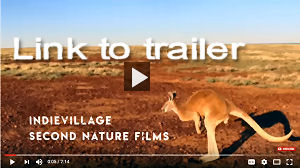
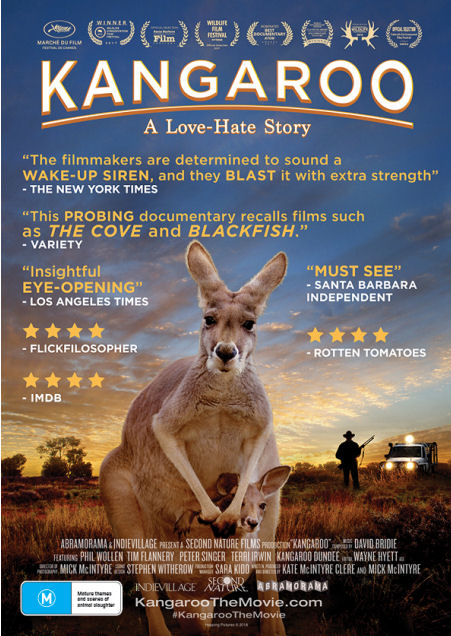
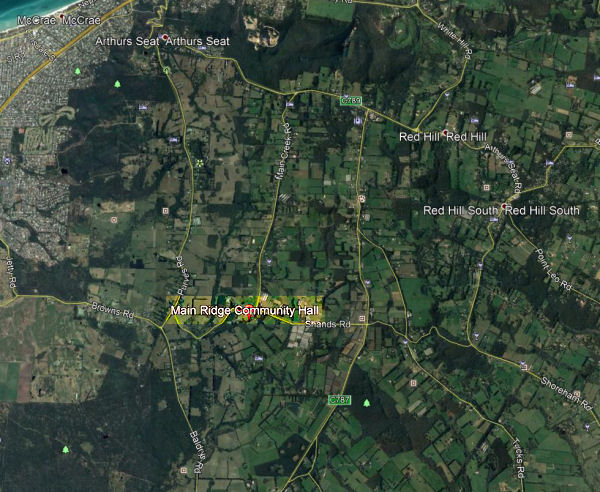
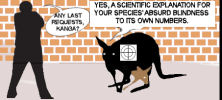 "Bush heritage makes some rather big assertions about the impact of kangaroos at their Scottdale reserve and the impacts this wildlife species is having on the biodiversity there. If Bush Heritage is serious about their claims then they need to be a little more transparent," writes Craig Thomson, President of the
"Bush heritage makes some rather big assertions about the impact of kangaroos at their Scottdale reserve and the impacts this wildlife species is having on the biodiversity there. If Bush Heritage is serious about their claims then they need to be a little more transparent," writes Craig Thomson, President of the 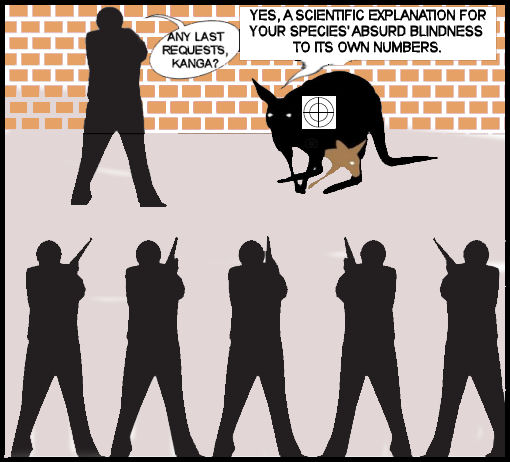
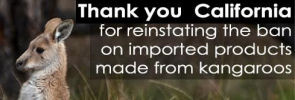 Kangaroos won! Please share. Thanks to everyone who emailed Californian Senators. You joined up to 100,000 people around the world who signed petitions and contacted the Senators directly. The main use - or abuse - of wild kangaroos in California is for the manufacture of soccer cleats!
Kangaroos won! Please share. Thanks to everyone who emailed Californian Senators. You joined up to 100,000 people around the world who signed petitions and contacted the Senators directly. The main use - or abuse - of wild kangaroos in California is for the manufacture of soccer cleats!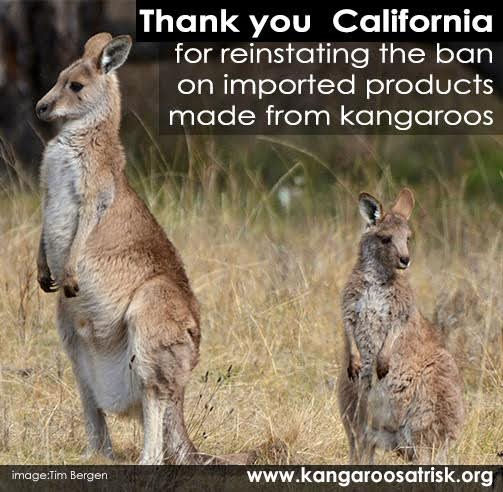 Keep an eye on the Kangroos at risk website
Keep an eye on the Kangroos at risk website 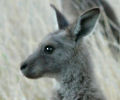 Over the last few months there has been an alarming increase in the numbers of juvenile Eastern Grey Kangaroo's being found either dead or in a very lethargic state and near death in parts of the ACT and adjacent New South Wales. Rosemary and Steve Garlic, who are wildlife carers in the area, were initially contacted by a few Wildcare carers and the issue then seemed to be centred around the Wamboin/Norton Road area. This article was developed from an internal note to members of Wildcare, of which Steve and Rosemary Garlic are members and Helen Stevens is the coordinator.
Over the last few months there has been an alarming increase in the numbers of juvenile Eastern Grey Kangaroo's being found either dead or in a very lethargic state and near death in parts of the ACT and adjacent New South Wales. Rosemary and Steve Garlic, who are wildlife carers in the area, were initially contacted by a few Wildcare carers and the issue then seemed to be centred around the Wamboin/Norton Road area. This article was developed from an internal note to members of Wildcare, of which Steve and Rosemary Garlic are members and Helen Stevens is the coordinator.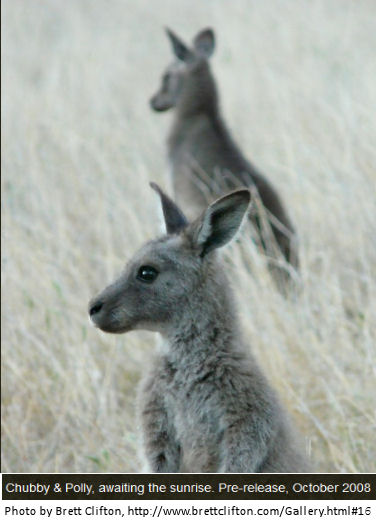 The situation now seems to be far more widespread as Wildcare have now received sick animals from Queanbeyan NSW, Jerrabomberra NSW, the ACT, Sutton NSW, and this week Burra, near Queenbeyan. Between Rosemary/Steve and myself we have dealt with or known of 60 suspected cases and it is very distressing.
The situation now seems to be far more widespread as Wildcare have now received sick animals from Queanbeyan NSW, Jerrabomberra NSW, the ACT, Sutton NSW, and this week Burra, near Queenbeyan. Between Rosemary/Steve and myself we have dealt with or known of 60 suspected cases and it is very distressing. Nobel laureate J.M. Coetzee is one of fifty well-known authors and scientists who have signed this open letter to the Canberra public protesting the mass killing of kangaroos which has been taking place annually for some time in Canberra. For those interested in the history of this annual slaughter, Candobetter.net has published at length on this subject here:
Nobel laureate J.M. Coetzee is one of fifty well-known authors and scientists who have signed this open letter to the Canberra public protesting the mass killing of kangaroos which has been taking place annually for some time in Canberra. For those interested in the history of this annual slaughter, Candobetter.net has published at length on this subject here: 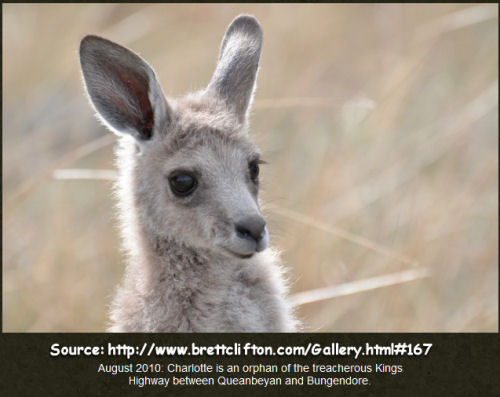 AN OPEN LETTER TO THE PUBLIC OF CANBERRA
AN OPEN LETTER TO THE PUBLIC OF CANBERRA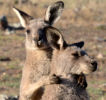 The ACT Government has obtained licences to kill 1,600 healthy kangaroos, plus an unknown number of joeys, in Canberra’s nature reserves over the next 3 months. However, for the first time, Animal Liberation ACT is standing up for the ACT’s native animals by challenging the Government’s killing program in the courts. The start of the annual kangaroo kill has been delayed after Animal Liberation ACT successfully obtained an injunction in the ACT Civil and Administrative Tribunal on 20 May 2014. Support is now needed to continue our Legal Challenge to Stop the ACT Government's Kangaroo Cull. The newly established Animal Defenders Office has provided pro bono legal services to get us to this point. We now need to raise funds urgently to cover the costs of a barrister for the legal battle ahead of us in the main hearing which began on Tuesday the 3rd of June 2014. The hearing ran for four days, and a decision is expected next week on whether to allow the killing of more than 1,600 kangaroos on Canberra's 'nature' reserves. Small and large donations welcome.
The ACT Government has obtained licences to kill 1,600 healthy kangaroos, plus an unknown number of joeys, in Canberra’s nature reserves over the next 3 months. However, for the first time, Animal Liberation ACT is standing up for the ACT’s native animals by challenging the Government’s killing program in the courts. The start of the annual kangaroo kill has been delayed after Animal Liberation ACT successfully obtained an injunction in the ACT Civil and Administrative Tribunal on 20 May 2014. Support is now needed to continue our Legal Challenge to Stop the ACT Government's Kangaroo Cull. The newly established Animal Defenders Office has provided pro bono legal services to get us to this point. We now need to raise funds urgently to cover the costs of a barrister for the legal battle ahead of us in the main hearing which began on Tuesday the 3rd of June 2014. The hearing ran for four days, and a decision is expected next week on whether to allow the killing of more than 1,600 kangaroos on Canberra's 'nature' reserves. Small and large donations welcome. 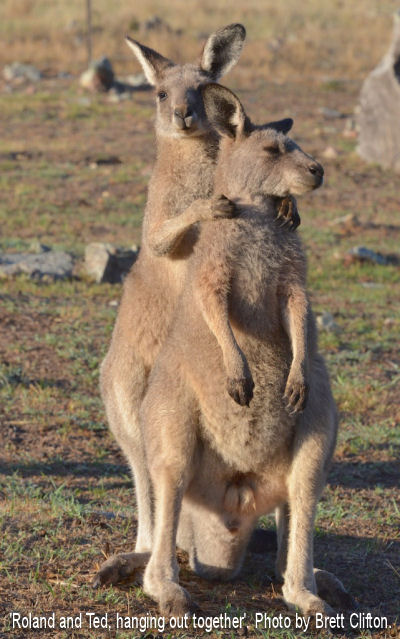
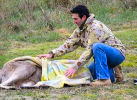
 We wonder if Bob Carr, Australia's Foreign Minister, has any idea of the utter distress he has given to wildlife carers all over Australia in his endorsement of the kangaroo-meat industry for export? It has reduced to despair mature activists who normally soldier on impressively (where the rest of us dare not even look) despite constant exposure to brutality, cruelty and a useless legal system in their daily rounds. Carr's position is even odder in view of his patron status with Voiceless, the vegan fund for animals.
We wonder if Bob Carr, Australia's Foreign Minister, has any idea of the utter distress he has given to wildlife carers all over Australia in his endorsement of the kangaroo-meat industry for export? It has reduced to despair mature activists who normally soldier on impressively (where the rest of us dare not even look) despite constant exposure to brutality, cruelty and a useless legal system in their daily rounds. Carr's position is even odder in view of his patron status with Voiceless, the vegan fund for animals.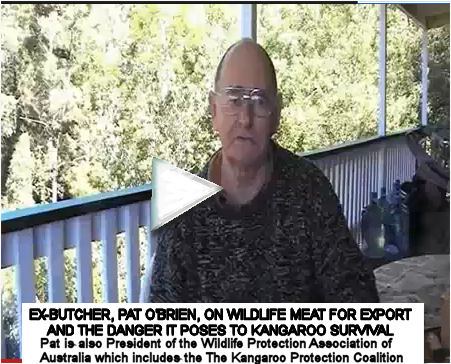
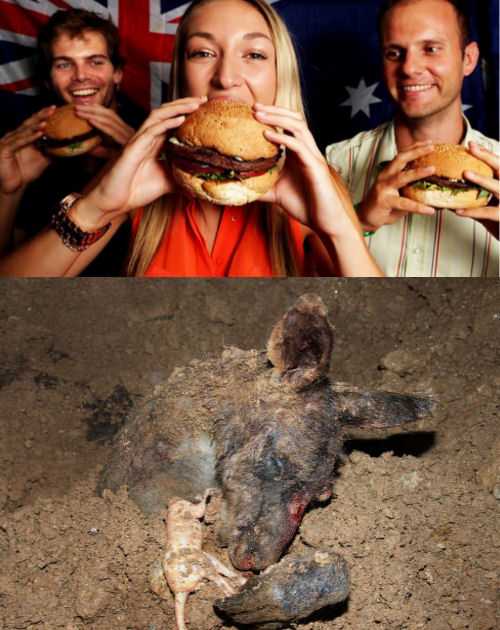 Source of top half of picture was
Source of top half of picture was 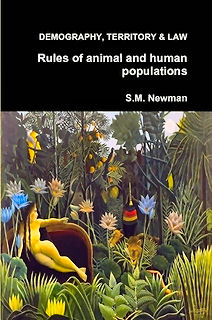
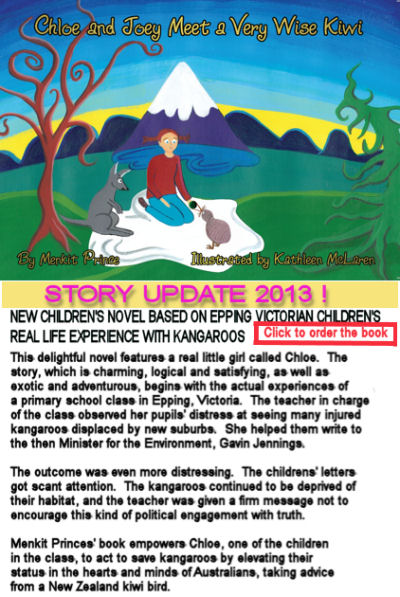
 As one who was involved early on in reporting on the 2008 incident that sparked off this book, and then in some proof-reading, I can personally say that I think this book is a triumph in embodying the goodness of children and their love of nature. This is a book that I will buy for children I know.
As one who was involved early on in reporting on the 2008 incident that sparked off this book, and then in some proof-reading, I can personally say that I think this book is a triumph in embodying the goodness of children and their love of nature. This is a book that I will buy for children I know.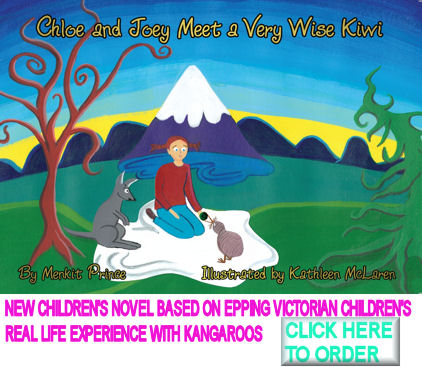
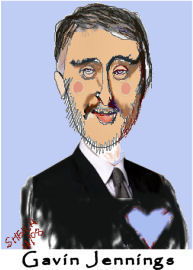
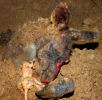
 These photographs of a mass-burial pit in Canberra for kangaroos gunned down by the government was sent to me by 'Friends of AnimalArmy' with the message, "We cannot find an investigative journalist anywhere who will expose the corruption and the lies." I cannot understand why not. Don't we want to know the truth?
These photographs of a mass-burial pit in Canberra for kangaroos gunned down by the government was sent to me by 'Friends of AnimalArmy' with the message, "We cannot find an investigative journalist anywhere who will expose the corruption and the lies." I cannot understand why not. Don't we want to know the truth?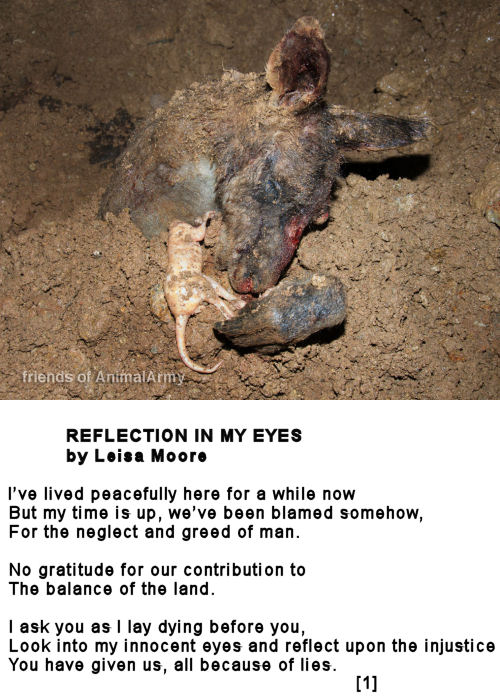
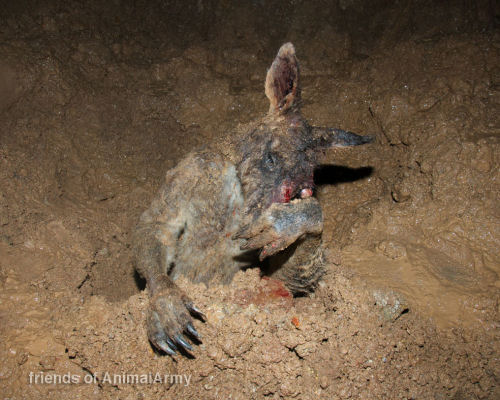
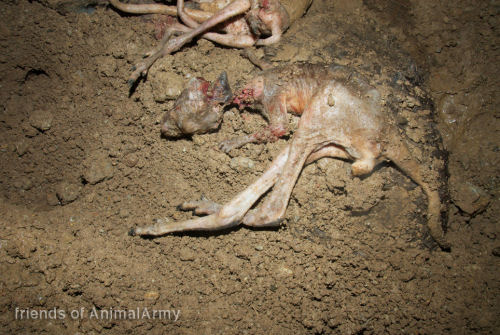
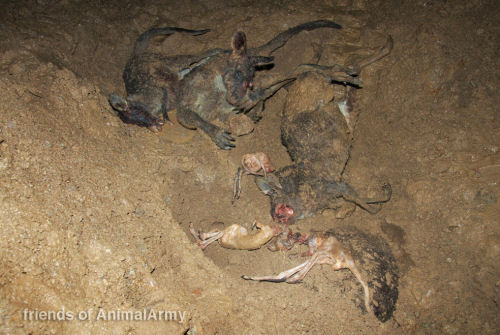
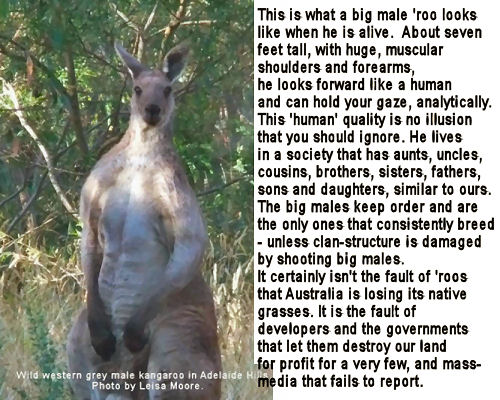
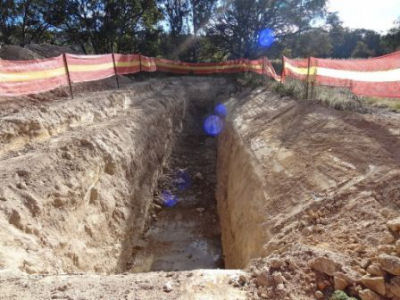
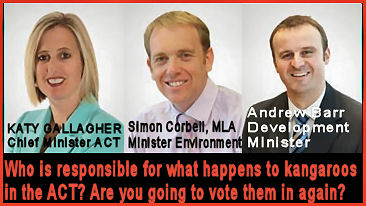
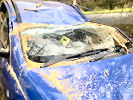
 "The car was so fantastic as a rescue vehicle and I am feeling saddened that because of someone hating me so much for helping wildlife that they damaged my car, forcing me to park it elsewhere, this has happened. I recently broke my ankle whilst out checking on animals and relied on my car so much. I cannot continue in the short time doing what I love most, helping the Kangaroos." If you would like to help Leisa to buy another car, or maybe in some other way, we include an address for contact and contributions at the end of this article.
"The car was so fantastic as a rescue vehicle and I am feeling saddened that because of someone hating me so much for helping wildlife that they damaged my car, forcing me to park it elsewhere, this has happened. I recently broke my ankle whilst out checking on animals and relied on my car so much. I cannot continue in the short time doing what I love most, helping the Kangaroos." If you would like to help Leisa to buy another car, or maybe in some other way, we include an address for contact and contributions at the end of this article.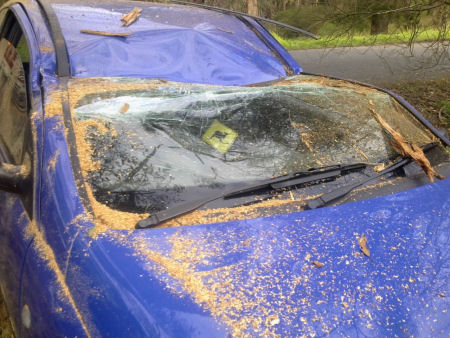
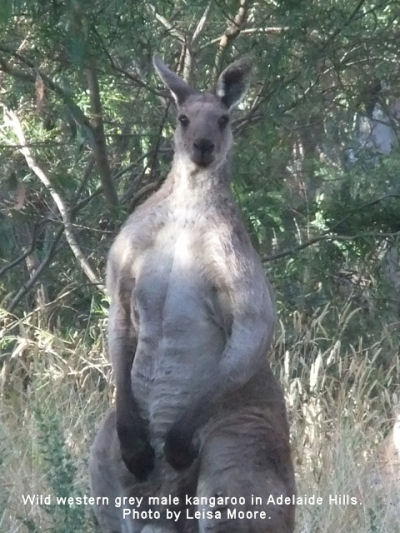 Leisa has been looking after kangaroos for 25 years here. She says that at first it was a fantastic area, but over time mindless hostility towards kangaroos has accompanied population pressure and clearing for development. Kangaroos and kangaroo rescuers are unpopular with people who want to clear land for housing. This has made the kangaroos and her life hell. Although some people appreciate what she does, there is a cowardly group of people who want her to move on and stop helping kangaroos. Leisa is so dedicated - to truth and kangaroos - however, that she refuses to move and continues to go out rescuing in the constantly deteriorating conditions.
Leisa has been looking after kangaroos for 25 years here. She says that at first it was a fantastic area, but over time mindless hostility towards kangaroos has accompanied population pressure and clearing for development. Kangaroos and kangaroo rescuers are unpopular with people who want to clear land for housing. This has made the kangaroos and her life hell. Although some people appreciate what she does, there is a cowardly group of people who want her to move on and stop helping kangaroos. Leisa is so dedicated - to truth and kangaroos - however, that she refuses to move and continues to go out rescuing in the constantly deteriorating conditions.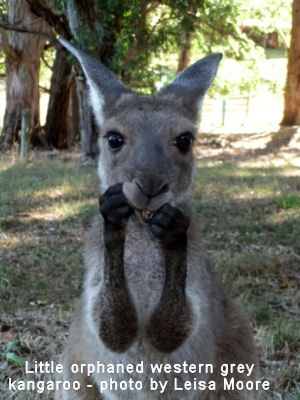 Leisa's practice has been to park her car in a particular area near council land and to go on foot to check fences and other hazards where wildlife, especially kangaroos, come to grief. She spends about four hours driving and walking areas each day.
Leisa's practice has been to park her car in a particular area near council land and to go on foot to check fences and other hazards where wildlife, especially kangaroos, come to grief. She spends about four hours driving and walking areas each day. 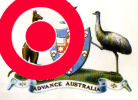 "Canberra's Nature parks will be closed tomorrow for a "cull" of Eastern Grey Kangaroos. About 2000 are to be slaughtered for a "sustainable" number, to protect the flora and fauna. Polls of about 600 residents reveal that 79% of the city want the killings to go ahead. It's ironical that 9 "Nature" parks will be closed, under that assumption that kangaroos are not part of Nature and a threat to conservation efforts and sustainability.
"Canberra's Nature parks will be closed tomorrow for a "cull" of Eastern Grey Kangaroos. About 2000 are to be slaughtered for a "sustainable" number, to protect the flora and fauna. Polls of about 600 residents reveal that 79% of the city want the killings to go ahead. It's ironical that 9 "Nature" parks will be closed, under that assumption that kangaroos are not part of Nature and a threat to conservation efforts and sustainability.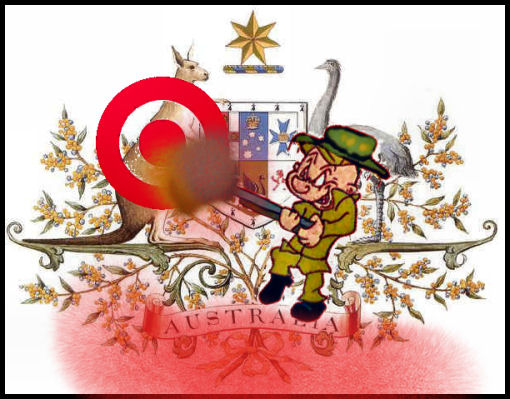
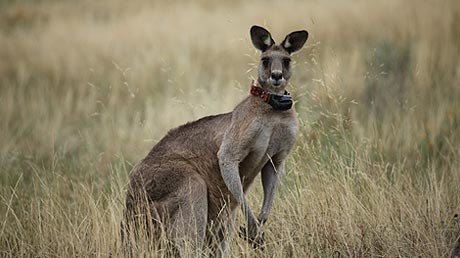 The ABC is to screen a documentary about kangaroos. It is scheduled for television on ABC1 channel will this coming Tuesday evening 21st February 2012 at 8:30pm
The ABC is to screen a documentary about kangaroos. It is scheduled for television on ABC1 channel will this coming Tuesday evening 21st February 2012 at 8:30pm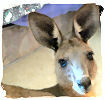 Six years ago, when we moved here, my partner found a joey on our property. I was absolutely thrilled when the rescuer asked me if I would like to learn how to care for him.
Six years ago, when we moved here, my partner found a joey on our property. I was absolutely thrilled when the rescuer asked me if I would like to learn how to care for him.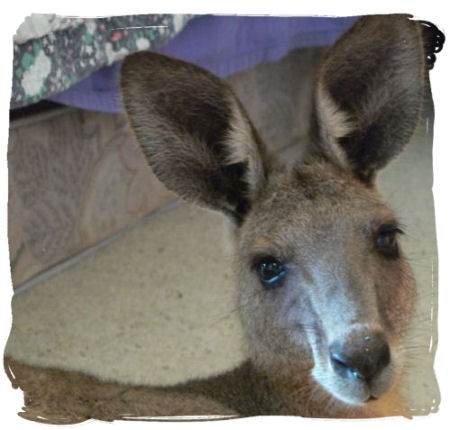
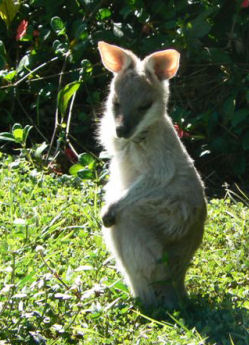
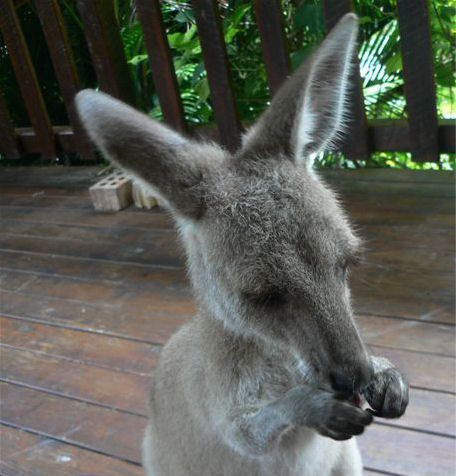
 Animal carer, Denise McLean, talks about how she became a wildlife carer, and her night and day-shift nurse routine taking care of Raini, a very young baby kangaroo, and other macropod charges. Raini the pinkie joey's mother was a car accident victim. Raini was found in his dead mother's pouch by a woman as she was shifting the mother off the road. Fortunately for him, the woman called an animal rescue line.
Animal carer, Denise McLean, talks about how she became a wildlife carer, and her night and day-shift nurse routine taking care of Raini, a very young baby kangaroo, and other macropod charges. Raini the pinkie joey's mother was a car accident victim. Raini was found in his dead mother's pouch by a woman as she was shifting the mother off the road. Fortunately for him, the woman called an animal rescue line.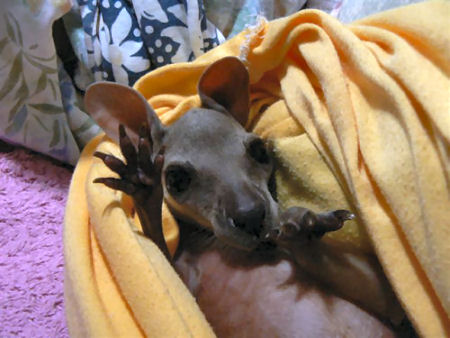

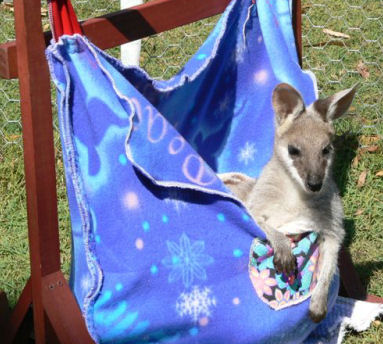
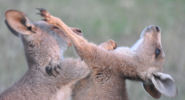 Denise McLean, an Australian animal carer writes about local council indifference to the effects of car collisions and dog attacks on kangaroos and her concerns about the government's positions on live export. (1 July 2011)
Denise McLean, an Australian animal carer writes about local council indifference to the effects of car collisions and dog attacks on kangaroos and her concerns about the government's positions on live export. (1 July 2011)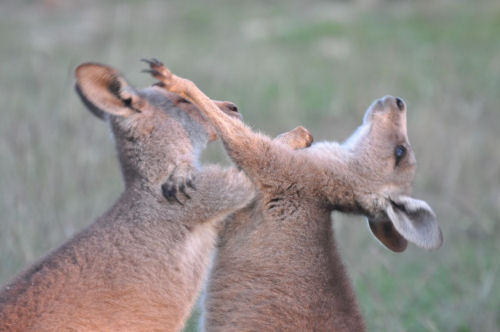
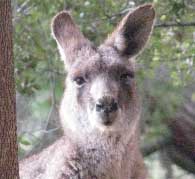
 Although the standing committee's refusal to endorse Hume LHPA's proposal will no doubt be a blow to the pest authority's submission to the Department of Environment, it is still possible that it will be approved and commercial culling will become a reality in the district.
Although the standing committee's refusal to endorse Hume LHPA's proposal will no doubt be a blow to the pest authority's submission to the Department of Environment, it is still possible that it will be approved and commercial culling will become a reality in the district.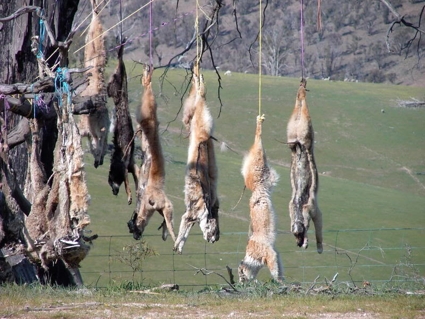 In terms of environmental management Australia is just a collection of colonies not unlike the days of very early settlement. Policies that govern the control of feral animals and natives that are perceived as pests differ from state to state (and territory).
In terms of environmental management Australia is just a collection of colonies not unlike the days of very early settlement. Policies that govern the control of feral animals and natives that are perceived as pests differ from state to state (and territory).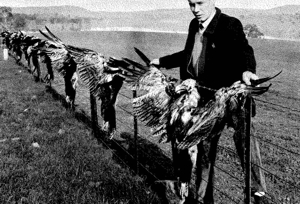
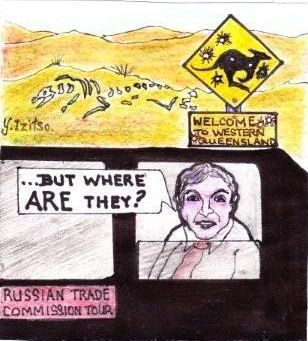 Last year Russia banned the import of kangaroo meat because of health concerns. The European Union President is also advocating a ban on kangaroo meat, but for wildlife preservation and cruelty reasons. Australian AgForce and the Australia-Russia Business Council have got together with the Queensland government to try to reverse this situation and they have been strongly courting the Russian meat trade again. In early June the Russian Trade Minister Yuri Aleshin was toured around Western Queensland with this trade in mind. Ironically he was recorded on an ABC radio broadcast posing the question regarding the kangaroos..."but where are they?" Obviously he had not seen the 'hordes' that are so often said to exist.
Last year Russia banned the import of kangaroo meat because of health concerns. The European Union President is also advocating a ban on kangaroo meat, but for wildlife preservation and cruelty reasons. Australian AgForce and the Australia-Russia Business Council have got together with the Queensland government to try to reverse this situation and they have been strongly courting the Russian meat trade again. In early June the Russian Trade Minister Yuri Aleshin was toured around Western Queensland with this trade in mind. Ironically he was recorded on an ABC radio broadcast posing the question regarding the kangaroos..."but where are they?" Obviously he had not seen the 'hordes' that are so often said to exist. What immoral hypocrisy we have in Australian Government when one department legitimises mass kangaroo slaughter as a 'kangaroo industry' and promotes 'kangaroo harvesting', while another department promotes the kangaroo as its 'hopping icon.'
What immoral hypocrisy we have in Australian Government when one department legitimises mass kangaroo slaughter as a 'kangaroo industry' and promotes 'kangaroo harvesting', while another department promotes the kangaroo as its 'hopping icon.'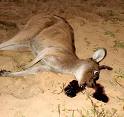
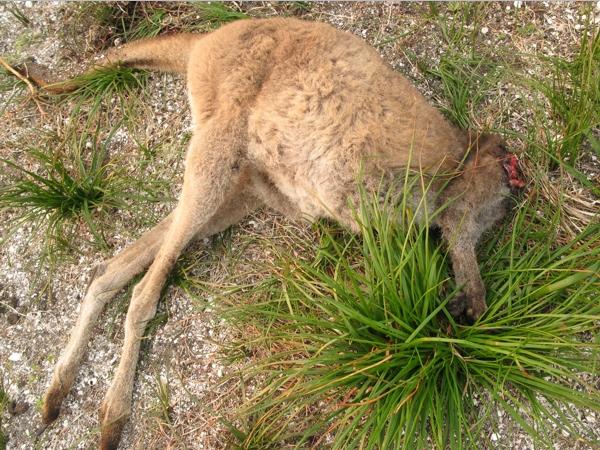 A kangaroo joey decapitated by authorities to make way for Prestons Golf Club, Perth
A kangaroo joey decapitated by authorities to make way for Prestons Golf Club, Perth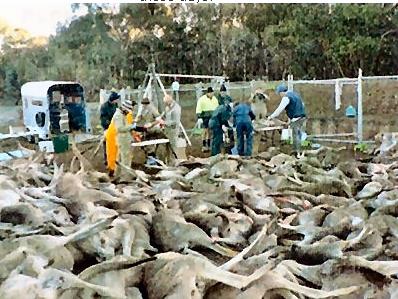
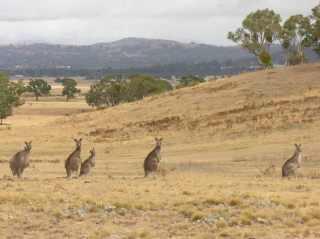 Kangaroos grazing at Majura outside Canberra before the mass slaughter
Kangaroos grazing at Majura outside Canberra before the mass slaughter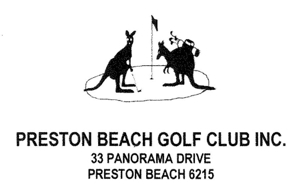 The 5th of may, 2010 will go down as another dark day in the history of Preston Beach and their love/hate relationship with the local kangaroos. On that day I attended a protest against the Department of Environment and Conservation (DEC) sanctioned cull of 100 kangaroos on the local golf course and many passionate wildlife supporters were present. There had been no shooting of kangaroos until that point even though the cull officially started several days earlier. Rumours circulated that the cull had been called off due to the negative media attention the Shire of Waroona and the Preston Beach Golf Club were receiving in the local and mainstream media. Upon returning home however I received a call confirming that the shooting had started immediately after the protesters had dispersed.
The 5th of may, 2010 will go down as another dark day in the history of Preston Beach and their love/hate relationship with the local kangaroos. On that day I attended a protest against the Department of Environment and Conservation (DEC) sanctioned cull of 100 kangaroos on the local golf course and many passionate wildlife supporters were present. There had been no shooting of kangaroos until that point even though the cull officially started several days earlier. Rumours circulated that the cull had been called off due to the negative media attention the Shire of Waroona and the Preston Beach Golf Club were receiving in the local and mainstream media. Upon returning home however I received a call confirming that the shooting had started immediately after the protesters had dispersed.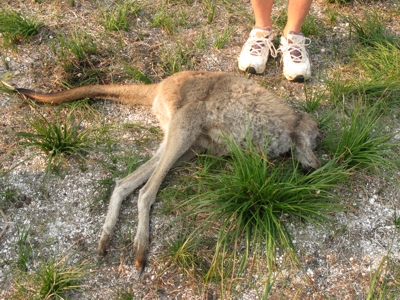
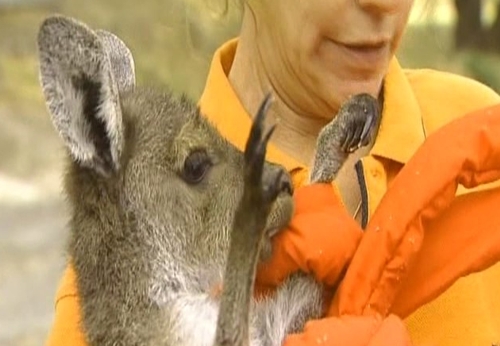
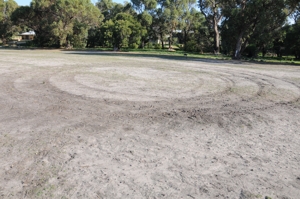
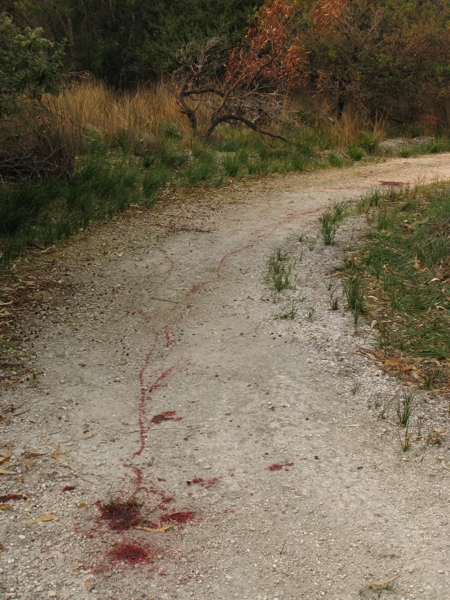
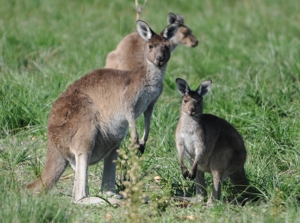
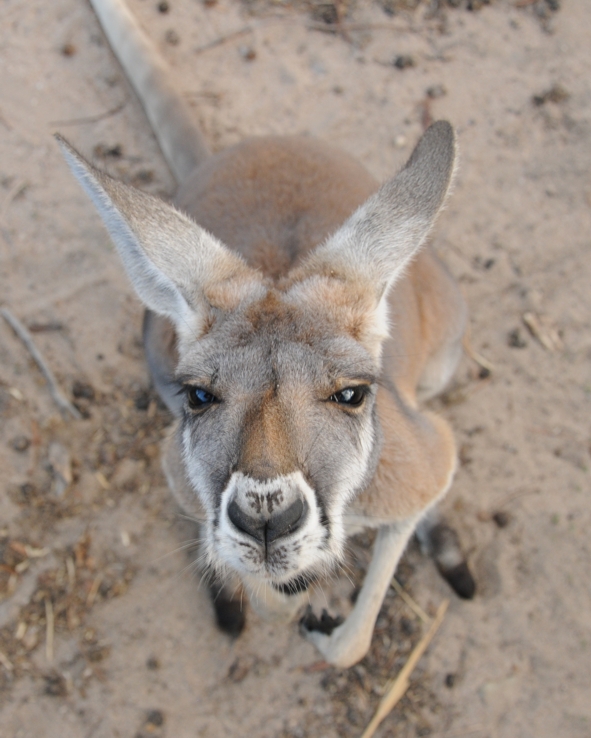 Queensland farming lobby group, Agforce has set up a Macropod Advisory Group to investigate how to sustainably harvest kangaroos. In an
Queensland farming lobby group, Agforce has set up a Macropod Advisory Group to investigate how to sustainably harvest kangaroos. In an 
Recent comments